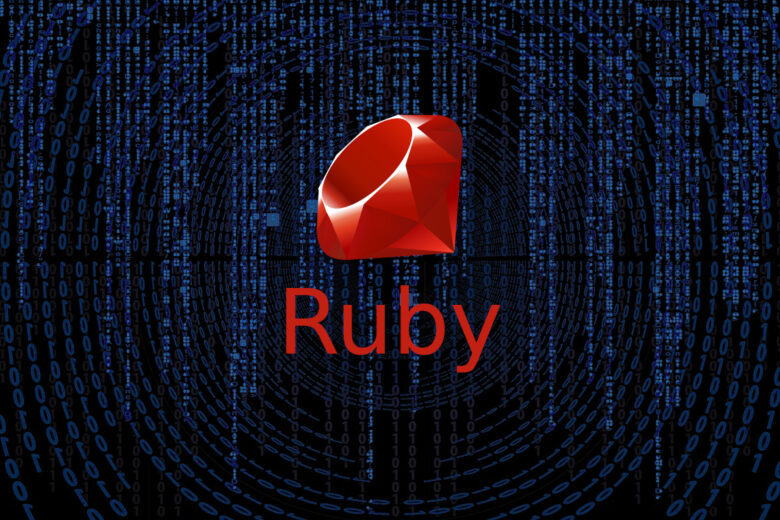At first glance, Ruby and Ruby on Rail might seem intertwined, yet they stand apart, each with distinct roles and strengths. Ruby is an elegant, highly readable programming language celebrated for its object-oriented features and intuitive syntax. Crafted for simplicity and productivity, Ruby invites both amateurs and experienced developers to work with ease, breathing life into diverse software projects.
On the other side, Ruby on Rails, often abbreviated as RoR or simply Rails, is a powerful web application framework. Using Ruby’s foundation, Rails introduces a structured approach to building web apps, emphasizing convention over configuration and the DRY (Don’t Repeat Yourself) principle. This framework streamlines web development, enabling creators to launch complex applications rapidly.
As we discuss those technologies, we’ll explore how they complement yet differ from each other. Join our ROR development company as we discover the nuances of programming language versus web framework, illuminating the path for those who start the journey of building web apps and software development tools with these technologies.
What is Ruby?

Source: geekboots.com
Born from the vision of Yukihiro “Matz” Matsumoto in Japan during the mid-1990s, Ruby was designed with a clear purpose: to make programming practical and enjoyable for developers. Matsumoto’s guiding philosophy was to blend simplicity with power and create a language that caters to the human, not the machine.
Its syntax closely resembles natural language, which significantly reduces the barrier to entry for beginners and makes it easier to read for experienced coders alike. Its object-oriented nature means everything in Ruby is an object. This language thrives on simplicity and productivity, freeing developers from the web of complex syntax that characterizes other programming tools.
Its applications extend far and wide. From data processing scripts to large-scale web applications, it’s particularly good for rapid application development. Its clear syntax and powerful software development tools allow for quick prototyping and iterative changes. However, the real testament to Ruby’s flexibility lies in the variety of domains it touches, encompassing automation, web scraping, and even game development.
Understanding Ruby is like learning a poetic yet practical language, opening doors to various programming adventures. As we dive deeper into the Ruby vs. Ruby on Rails discourse, it’s important to appreciate Ruby not just as a language but as a foundation for creativity and innovation in the coding world.
What is Ruby on Rails?
Created by David Heinemeier Hansson while working on the project management tool Basecamp, Rails was publicly released in 2004. This event marked the beginning of a new era in web development, promoting a more organized and faster way to bring ideas to life.
Ruby on Rails stands as a beacon of the MVC (Model-View-Controller) architecture, a design pattern that separates an application into three interconnected components. This separation enhances clarity, scalability, and ease of maintenance. Rails champions the concepts of ‘Convention over Configuration’ and the ‘DRY (Don’t Repeat Yourself)’ principle, encouraging developers to follow a standard structure and avoid repetitive code. These philosophies drastically reduce development time and errors and make Rails an ideal candidate for those looking to deploy applications swiftly.
Rails is particularly well-suited for projects that require rapid development and clean, maintainable code. This makes it a favorite for startups and established companies, as it supports the agile methodologies that are essential in today’s fast-paced tech world. Whether building complex e-commerce platforms, social networking sites, or anything in between, Ruby on Rails provides a solid and scalable foundation.
Key Differences Between Ruby and Ruby on Rails

Source: elpassion.com
Though they share a symbiotic relationship, their distinctions are fundamental.
- Foundation vs. structure ─ Ruby is a programming language rich in simplicity and designed for general-purpose programming tasks. It provides the bedrock on which various applications can be built, including web development. Conversely, Rails is a framework, a structured suite of tools and components tailored explicitly for creating web applications. Built using Ruby, it offers a predefined environment for web development.
- Scope of use ─ Ruby, with its versatile nature, finds utility in a range of environments—from data processing to prototyping, it caters to many beyond the web. On the other hand, Rails has a laser-focused application: it’s the architect of choice for building complex, database-driven websites, embodying the maxim “Convention over Configuration” to ensure rapid development without the typical web development headaches.
- Flexibility vs. opinionated guidelines ─ Ruby offers a canvas of possibilities, allowing developers the freedom to script in a style that best suits their project’s demands. This open-ended approach fosters creativity and innovation but can lead to varied coding practices. Rails, in contrast, subscribes to an opinionated set of rules and structures, like the MVC architecture, and aims to unify and accelerate the web development process. While this might restrict creative coding to some extent, it guarantees consistency and efficiency in Rails projects.
When to Use Ruby Alone

Source: fullstackacademy.com
There are specific scenarios where using Ruby without the Rails framework aligns more closely with project goals or learning paths.
- Scripting and data processing ─ It excels in automating tasks and processing data. Whether you’re manipulating text files, generating reports, or handling CSV data, its readable syntax and powerful string manipulation capabilities make it an ideal choice. In environments where the overhead of a web framework is unnecessary, its scripts offer efficient and straightforward solutions to complex data processing needs.
- Small-scale applications ─ Not every project requires the entire machinery of a web framework. For smaller-scale applications or when developing software that does not need to operate over the web, its lightweight nature becomes its greatest asset. It allows developers to create quick prototypes or standalone desktop applications without the additional layers and conventions imposed by Rails.
- Learning the fundamentals of programming ─ Starting with Ruby alone, without Rails, can be a more approachable path. It allows newcomers to grasp the basics of programming — from understanding control structures to mastering object-oriented concepts — in a clean and less distracting environment. Once these fundamentals are solidified, transitioning to Rails or other frameworks becomes a natural step forward, armed with a stronger coding foundation.
When to Use Ruby on Rails

Source: blog.tubikstudio.com
Ruby on Rails stands out as a lighthouse for certain types of projects, guiding them to a successful launch with its structured approach and comprehensive toolset.
- The rapid development of complex web applications ─ When the clock is ticking and the market awaits, Rails is the go-to. It’s not just about speed; it’s about efficiency and clarity. Rails provides a lot of built-in tools and conventions that speed up the development process. For startups or projects under tight deadlines that aim to test concepts or launch products quickly, Rails serves as an invaluable ally, turning complex ideas into working applications in record time.
- Projects that benefit from Rails’ conventions and scaffolding ─ If you’re venturing into a project where consistency and structure are pivotal, Rails shines with its ‘Convention over Configuration’ philosophy. This approach reduces the number of decisions developers need to make, freeing them to focus on unique aspects of their applications. The scaffolding feature further assists in swiftly erecting a site’s basic structure. It enables developers to concentrate on refining and expanding their applications.
- Applications requiring robust database interactions and web interfaces ─ For projects where database interactions form the backbone of the application, Rails offers a seamless integration and handling experience. It simplifies the creation and management of database-driven websites. Additionally, with its MVC architecture, Rails encourages the development of clean, maintainable code, making it easier to build scalable, user-friendly web interfaces.
Conclusion
Ruby stands out as a versatile, object-oriented programming language, offering clarity and flexibility for a range of programming tasks beyond the web. In contrast, Rails is a specialized framework designed for the construction of web applications.
When faced with the choice between Ruby and Rails, the path forward depends on the terrain of your project. For those who need a general-purpose programming tool or seek to understand programming fundamentals, Ruby alone offers a broad and flexible landscape to explore. However, if your journey involves crafting a web application, especially one that demands quick development with a structured approach, Rails guides you with its predefined paths and signposts.
Ultimately, the choice between Ruby and Rails should be guided by the specific requirements and goals of your project. Reflect on the nature of the tasks at hand, the urgency of development timelines, and the need for web-specific functionalities. By aligning these factors with the strengths of each tool, you can embark on a development journey that is not just productive but also fulfilling.




